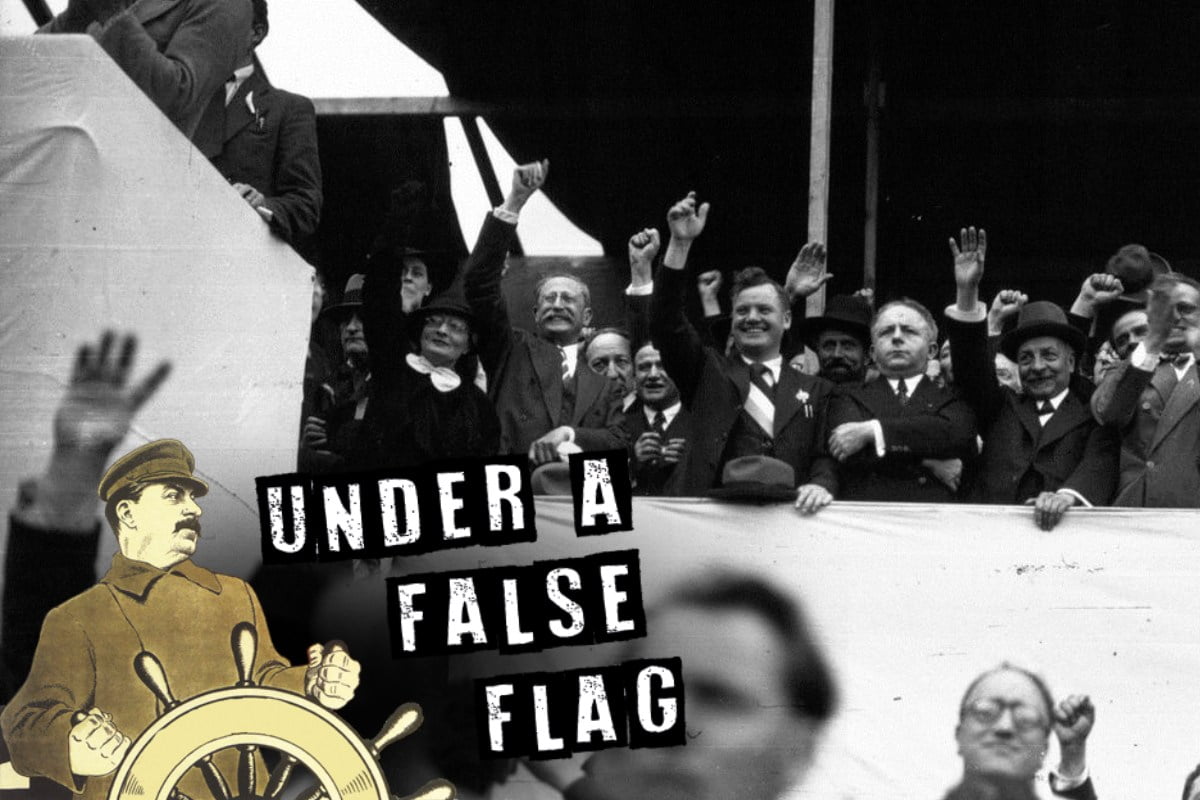As part of the British section of the International Marxist Tendency's series on the historic crimes of Stalinism, and in defence of the genuine ideas of communism, Rob Sewell examines the disastrous ‘Popular Front’ policy in the 1930s, which consigned the revolutionary working class to defeat.
[Originally published at communist.red]
As previously reported, the misnamed ‘Communist’ Party of Britain (CPB), worried about the impact we are making, have issued a statement falsely accusing us of coming from an “anti-communist” tradition.
We have in fact consistently defended genuine communism: against the capitalists, as well as the Stalinists. We reject the tradition of Stalinism, which played – and still plays – a disastrous role in the workers’ movement.
It is the CPB leaders who shamefully and deliberately hide the criminal history of Stalinism, and try to cover up their Stalinist past.
From ‘ultra-leftism’…
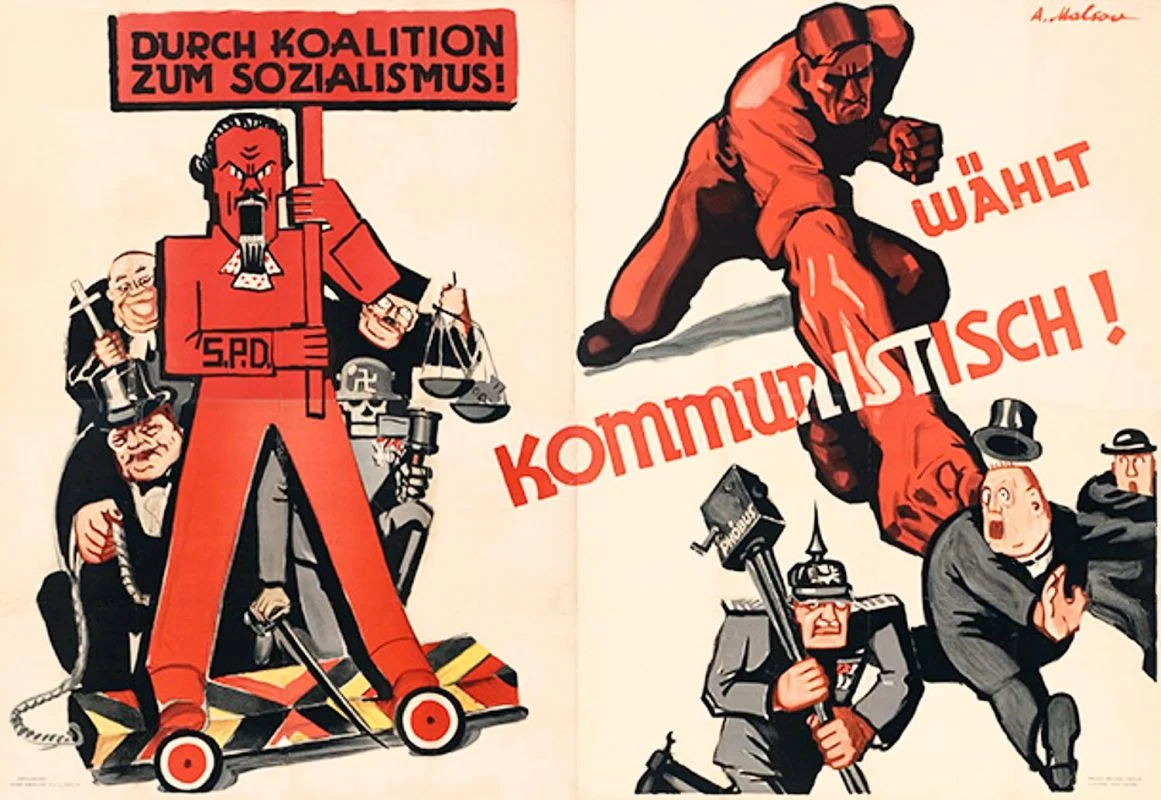 KPD election poster from 1928 attacking the notion of a coalition with the SPD / Image: public domain
KPD election poster from 1928 attacking the notion of a coalition with the SPD / Image: public domain
We previously dealt with the ‘Communist’ Party’s insane ultra-left period between 1928 and 1934, which played a pernicious role in splitting the German working class. This directly led to the victory of Hitler and prepared the way for the Second World War.
Despite this catastrophe, the Stalinists maintained that their policy was 100% correct. They said the Hitler regime would soon collapse, to be followed by their turn in power!
In reality, the party was smashed, and its members were being led to the concentration camps.
For the first six months, Stalin hoped to keep on good terms with Hitler. But Hitler rebuffed him. Stalin therefore began to look to France and the other ‘democracies’.
…to the ‘Popular Front’
From denouncing everyone as ‘fascists’, especially the Social Democrats, Stalin now shifted 180 degrees to seek a broad alliance that included bourgeois and even right-wing groups.
This new Popular Front ‘line’ was adopted at the Seventh (and last) Congress of the Communist International (‘Comintern’) in 1935.
The Popular Front was the opposite of Lenin’s tactic of the united front. Lenin’s united front was a proposal for a bloc of workers’ organisations, formed with concrete aims. It was, in effect, a call for workers’ groups to ‘march separately, but strike together’.
In contrast, the Popular Front was a replica of the class-collaborationist position of the Mensheviks in Russia, which Lenin attacked. It was a case of ‘march together, and get cut down separately’.
The Popular Front acted as a trap for the working class. So as to avoid alienating their new ‘friends’, the bourgeois liberals were effectively given a veto over the actions of the workers’ parties.
Class collaboration
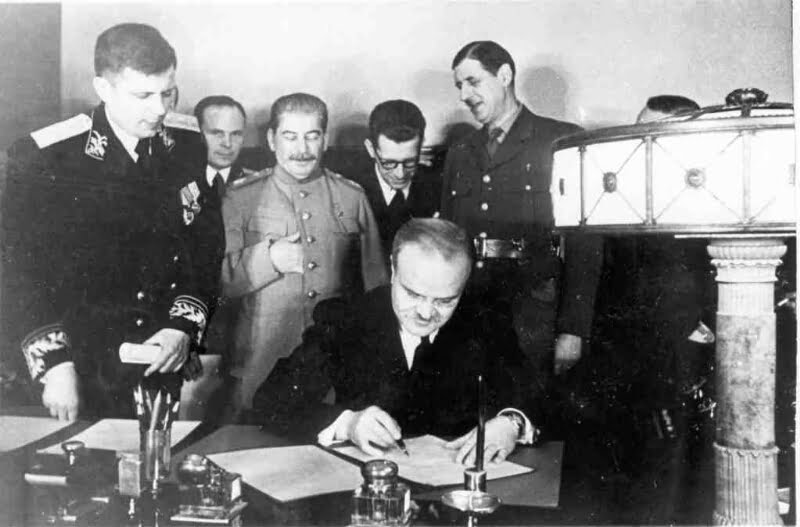 Stalin signing a mutual assistance pact with the French imperialists in 1936 / Image: prlib.ru
Stalin signing a mutual assistance pact with the French imperialists in 1936 / Image: prlib.ru
It was at this time that Stalin succeeded in joining the League of Nations in September 1934. Lenin, in contrast, described the League as a “thieves’ kitchen”.
While a workers’ state may need to make temporary agreements with capitalist governments for its survival, under Lenin’s leadership there was no question of any political support for such governments. Lenin stated that it was impermissible to put an ounce of trust in these ‘allies’.
In contrast, Stalin signed a treaty of mutual assistance with France in 1936, heartily approving the growth of French militarism. This resulted in the French CP falling into line and voting for the war budget of the French militarists.
The ‘communist’ parties had become mouthpieces for Moscow’s foreign policy, and adapted their policies accordingly.
Patriotism
In Stalin’s interview with Roy Howard (1 March 1936), he abandoned any pretence of Marxist analysis, and simply dropped a class perspective in favour of liberal terms like the “friends of peace” and the “enemies of peace”. In much the same way, the present-day Stalinists refer to ‘peace-loving’ nations, etc.
When Stalin was asked about the USSR’s “plans and intentions for bringing about a world revolution”, he replied that “we never had such plans and intentions”. The idea, he said, they had was “a tragi-comic misunderstanding”.
‘Socialism in one country’ was being interpreted as ‘revolution in a single country’.
Patriotism was now being fostered in the communist parties, with the French Stalinist leader Thorez offering his hand to the fascist Croix de Feu on a ‘patriotic’, anti-German basis. The French tricolour replaced the red flag. In Britain, the CP was to offer a similar appeal to Churchill’s Tories.
Today, patriotism and ‘sovereignty’ permeates the nationalist programme of the ‘British Road to Socialism’ of the CPB.
France
The radicalisation of the 1930s led, under the influence of the Stalinists, to the formation of Popular Front (coalition) governments in France and Spain, which acted as a brake on the revolutionary movements of the working class.
In June 1936, following the election of the Popular Front government in France, two million workers took part in a spontaneous general strike. Factory occupations spread like wildfire. It was the mightiest movement of the French working class since the Paris Commune.
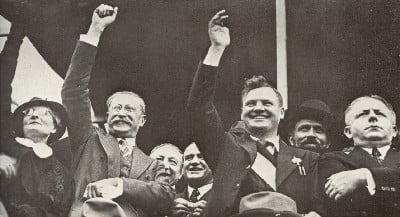 French CP leader Maurice Thorez standing with SFIO leader Leon Blum / Image: public domain
French CP leader Maurice Thorez standing with SFIO leader Leon Blum / Image: public domain
“From the start,” explained Jacques Fauves, “the movement assumed a two-fold revolutionary aspect, attacking both authority and property.”
The leaders of the trade unions and the workers’ parties were taken completely by surprise, and sought to undermine the movement. This included the so-called Communist Party.
“We are concerned about two things,” stated the French CP leader, Duclos, “first, to avoid any disorder, and second, to get talks going as soon as may be, with a view to a quick settlement of the conflict.”
At its height, Thorez, another CP leader, assembled the Communists of Paris and ordered them to use their influence to end the strike:
“While it is important to lead well a movement for economic demands, it is necessary to know how to end it. There is at present no question of taking power.”
The party put forward the slogan: “The People’s Front is not the revolution”.
Betrayal
The revolutionary movement of the French workers was betrayed. The Socialists and ‘Communists’, in alliance with the bourgeois liberals, acted as a colossal brake, which sabotaged the developing revolution.
This policy was not, of course, decided by the French ‘Communist’ leaders alone, but was the policy of the Comintern and Stalin.
The French CP leaders acted to betray in the same way as they betrayed the revolutionary general strike of 1968.
The bourgeois liberals (the Radicals) acted as a Trojan horse within the Popular Front, who represented the interests of big business.
But rather than leading the workers to power, the Socialist and ‘Communist’ leaders used their prestige to act as a cover for the liberals. They could not allow anything to frighten away their new ‘allies’, as they argued this would play into the hands of the fascists. But this prepared the way for the defeat of the movement.
Spanish revolution
Trotsky correctly described the People’s Front as a “strike-breaking conspiracy”.
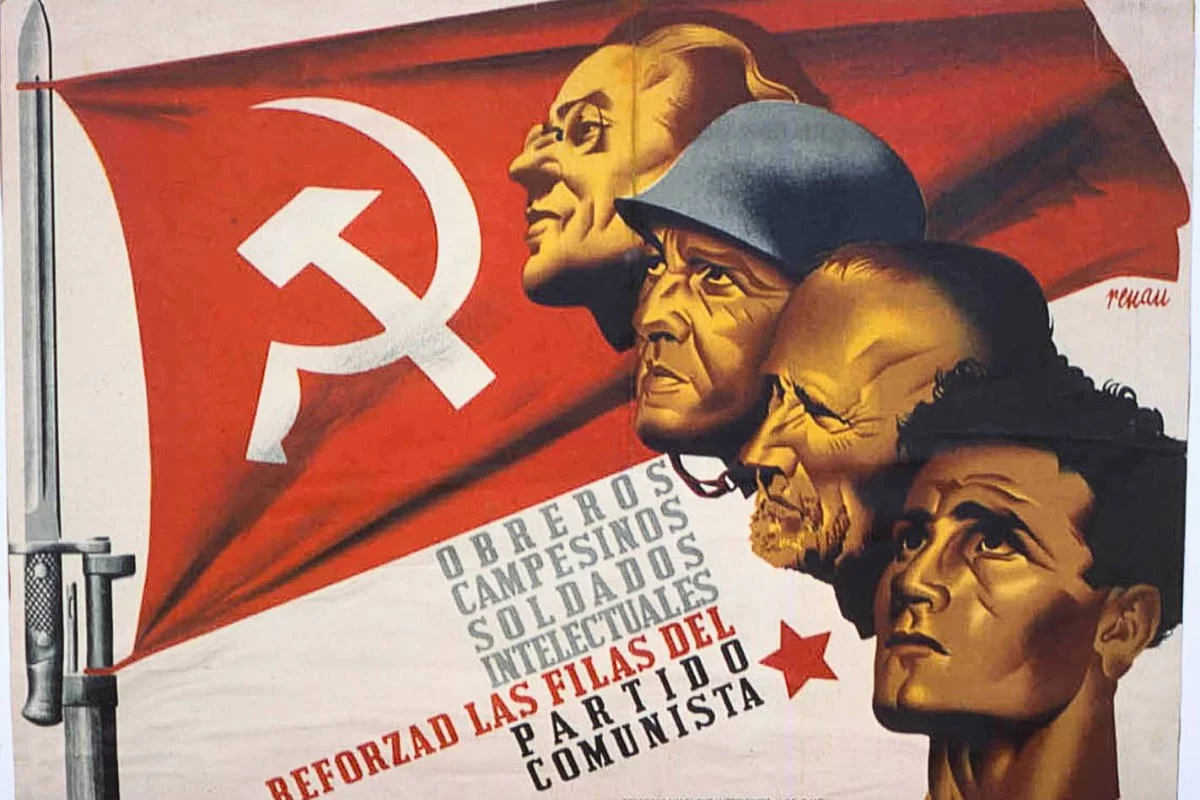 The Spanish CP deliberately sabotaged the Spanish Revolution on the orders of Moscow / Image: public domain
The Spanish CP deliberately sabotaged the Spanish Revolution on the orders of Moscow / Image: public domain
The victory of the Popular Front in Spain in 1936, also propelled the masses into action. They took control of the streets, and occupied the closed factories and estates, without waiting for the government to act.
But again, the Popular Front government, with the connivance of the Stalinists, acted as a massive brake.
When the workers seized the factories in Catalonia, following the fascist rebellion of General Franco, the ‘Communists’ held them back. They adopted a two-stage theory: first win the war against Franco, they said, then the workers could talk about socialism later.
Once again, this was a direct reflection of the Menshevik ‘two-stage theory’, which Lenin attacked.
The real choice was not between a fascist dictatorship or a bourgeois democratic republic, but fascism or proletarian revolution.
The only way to defeat Franco was to give land to the peasants, and factories to the workers. That meant carrying out the socialist revolution and waging a revolutionary war against Franco.
But the Spanish ‘Communist’ Party, under orders from Stalin, vehemently opposed this, and became the bulwark behind the lines of the bourgeois counter-revolution. The Stalinists became the greatest defenders of ‘law and order’ and private property.
They deliberately sabotaged the Spanish Revolution on the orders of Moscow. Stalin betrayed the revolution to smooth the way for a diplomatic deal with the capitalist ‘democracies’. But this only prepared the way for the victory of Franco.
Throughout this period, British ‘Communist’ Party leaders justified every twist and turn demanded by Moscow. The CPB became a willing tool of its foreign policy.
This clearly demonstrates the gulf between genuine communism – upon which the Revolutionary Communist Party stands – and Stalinism.

